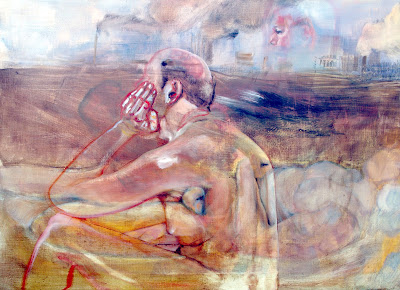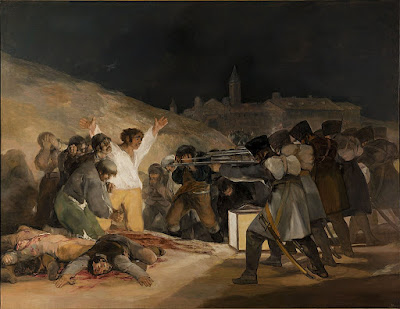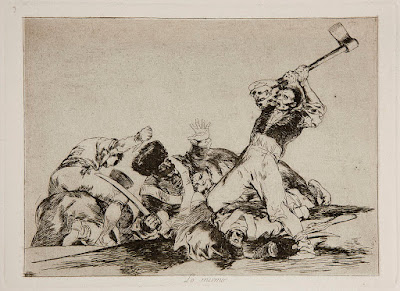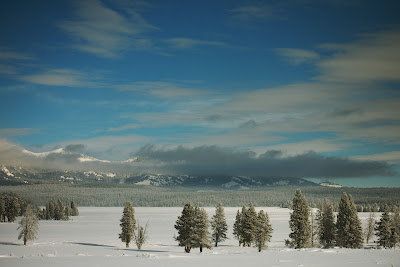We can all do what Americans and Canadians do best: send money.
 |
| This painting has ceased to exist; it was a musing on the First Gulf War. |
Although I’m fairly ‘green’, I bought my Prius in 2005 primarily for geopolitical reasons. It had been only a few short years since 9/11. There was credible information that our oil purchases were funding jihadism. I wanted to limit the amount of money I was sending to the Middle East.
Dependency on foreign oil has been a fact of life since the invention of the internal-combustion engine. Today it’s Europe that is suffering from the boycott of Russian oil. I reckon that every gallon we don’t consume is a gallon that eases pressure on European consumers.
We drive a hybrid and heat primarily with wood. We can and will curtail unnecessary travel, but I can’t figure out how to cut our oil consumption much further. If you have suggestions, I’d love to hear them.
Russia’s attack on Ukraine has put paid to any idea that modern Europeans have somehow sidestepped their bloody history. The post-Cold War peace was illusory; it has exploded into hot conflagration.
As I write, a friend is driving to Poland to try to rescue her cousin from the mass of refugees streaming across the border. I can’t drive to Poland, but I can do what Americans and Canadians do best: send money.
Retired journalist Rita Truschel is the child of refugees herself. She put together this list of organizations helping in Ukraine or for refugees. I’ve appended Charity Navigator ratings where appropriate. (No rating doesn’t mean the organization is wasteful; it just means that they aren’t required to file American tax forms.)
Children’s welfare
Save the Children (91.82)
United Nations Children’s Fund(89.18)
Emergency housing
Airbnb Disaster Response (not a charitable organization but funneling money to people on the ground)
Surplus medical supplies
Afya Foundation Disaster Response (97)
MedWish International (100)
Medical volunteers
Doctors Without Borders (92.25)
International Medical Corps (83.94)
Logistics & shipping
Brother’s Brother Foundation(92.92)
Flexport (not rated)
Refugees’ survival & resettlement
Catholic Relief Service(83.94)
Canada Helps (not rated)
Canada-Ukraine Foundation (not rated)
CARE Ukraine Crisis Fund (92.64)
International Rescue Committee (86.92)
Lutheran World Federation (not rated)
Sunflower of Peace (not rated)
US-Ukraine Foundation (not rated)
United Nations Refugee Agency(not rated)
 |
| Damned if you do, damned if you don’t is one of the paintings at Rye Arts Center’s Censored and Poetic, which is what I should be writing about today. |
In normal times, this post would have been about the opening of Censored and Poetictomorrow evening, so I should at least mention it. If you’re in the metro New York City area, I’d love to see you there, and if not, the event will be livestreamed here.






































